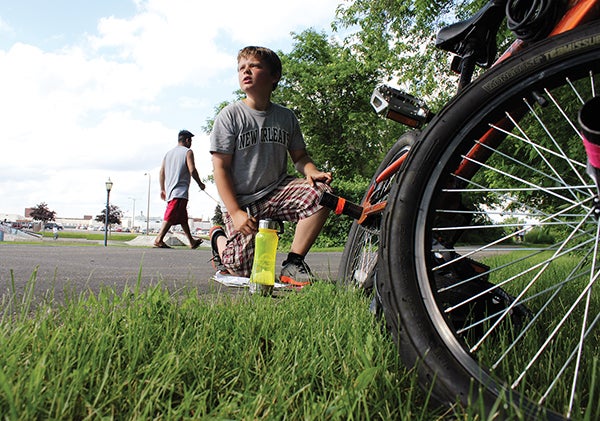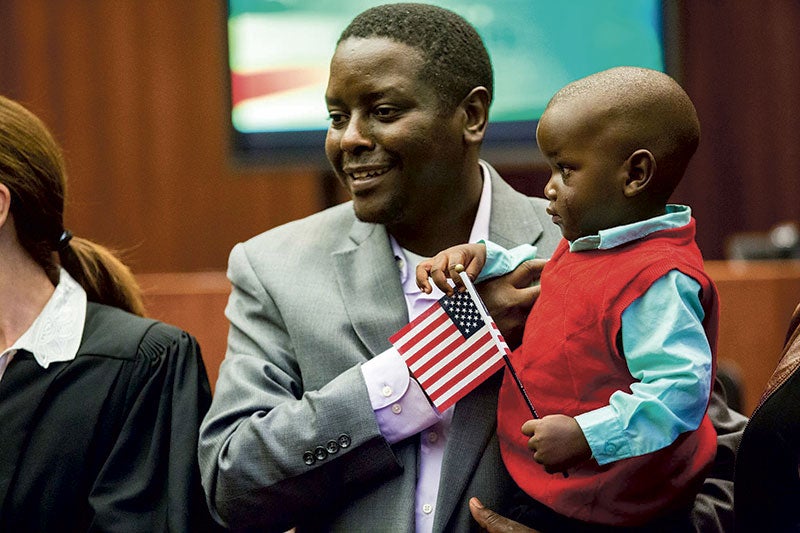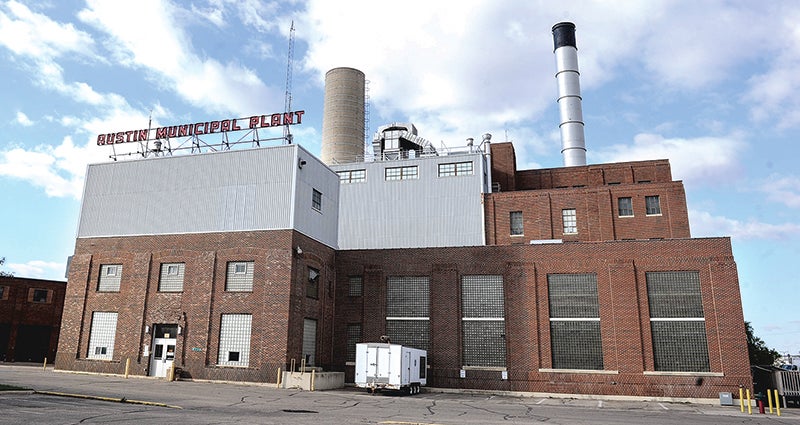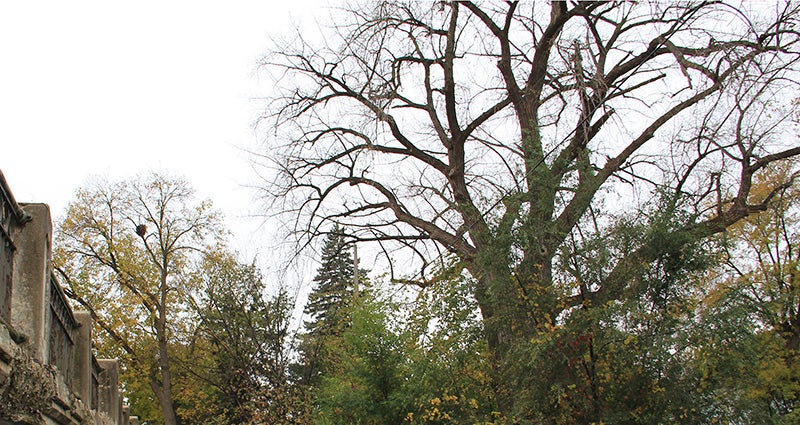Trail committee walking steadily towards 2016 goal
Published 5:02 am Monday, June 24, 2013

Blaine Krueger counts people on the bike trail in Austin Tuesday afternoon. Krueger and his parents were among others who volunteered to count walkers and bikers to gauge usage on local trails. Matt Peterson/matt.peterson@austindailyherald.com
The Bike/Walk Trail Committee is pedaling forward at a rapid rate and its goals may be met by 2016, four years ahead of the Vision 2020 deadline.
Laura Helle said the group aims to make Austin a center point for bicyclists, so people can start there and take day trips in different directions.
“We’d really like to become a regional hub,” she said.
Austin City Engineer Steven Lang has plans five years into the future for additional bike trail segments, Helle said. Included is a “city loop” project that would build trails to trace around the outside of Austin and give residents a way to take a long-distance ride without going too far out of town.
“There’s also some infrastructure enhancements,” Helle said, adding better lighting and restroom stops could become part of the circuit.
There are more plans to finish connecting Austin with two regional lines: the Shooting Star trail, which runs south to Rose Creek and beyond, and the Blazing Star trail, which cuts west to Albert Lea.
The county will need to acquire land to get the trails built. To gauge usage on the trails, the Boy Scouts from Troop 113 counted walkers and bikers on the trail last week, as well.
They hope to bring more attention and support for more trails. Promoting the trails, adding signage and distributing bike trail maps will bring more bicyclists out.
Among the efforts to expand the system is a push for safety. Helle said public awareness campaigns should help bikers and drivers understand how to share the road with one another, and remind each about their obligations under the rules of the road. A low-cost bike helmet events will continue to cut the cost of basic safety equipment for local riders.
Community Pride and Spirit
The Community Pride and Spirit Committee is starting with the basics: patching up Austin homes.
Volunteers in Vision 2020’s Community Home Improvement Project walked around Austin’s northeast side near Queen of Angels Catholic Church and picked out a couple of blocks where houses could use touching up. They took down information and set out letters to 18 homeowners to gauge their interest in fixing up the property.
“We sent letters to all those residents offering the services of the program,” Helle said.
Habitat for Humanity organized volunteers to help out the six homeowners who got on board with the project in tasks like exterior painting, window replacement and sidewalk and porch repair. The workers will start on $40,000 worth of upgrades in the next week.
Homeowners are responsible for the cost of materials, while the labor itself is donated. Some homeowners qualified through a low-interest loan from the Austin Housing and Redevelopment Authority, while others had a low enough income that the money came through a grant instead.
It will take about four to six weeks for CHIP to finish the project. Helle hopes the group’s momentum will continue and more neighborhoods would be fixed up in the future, but the Community Pride and Spirit Committee is not likely to fit any more houses in this summer.
“We are definitely considering this sort of the pilot project year,” Helle said. “This is our chance to work out the bugs.”




